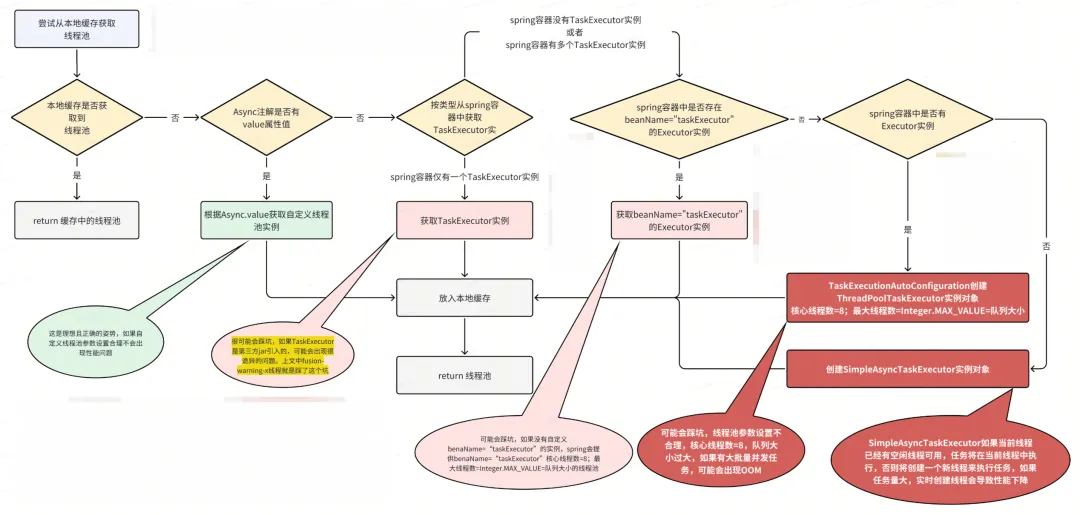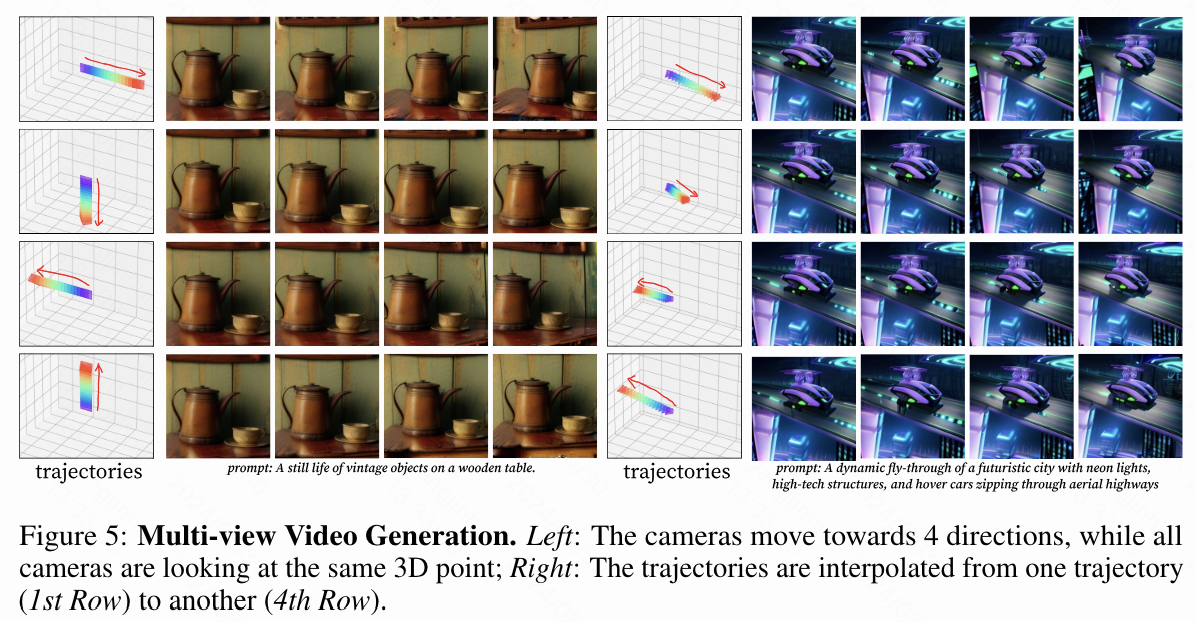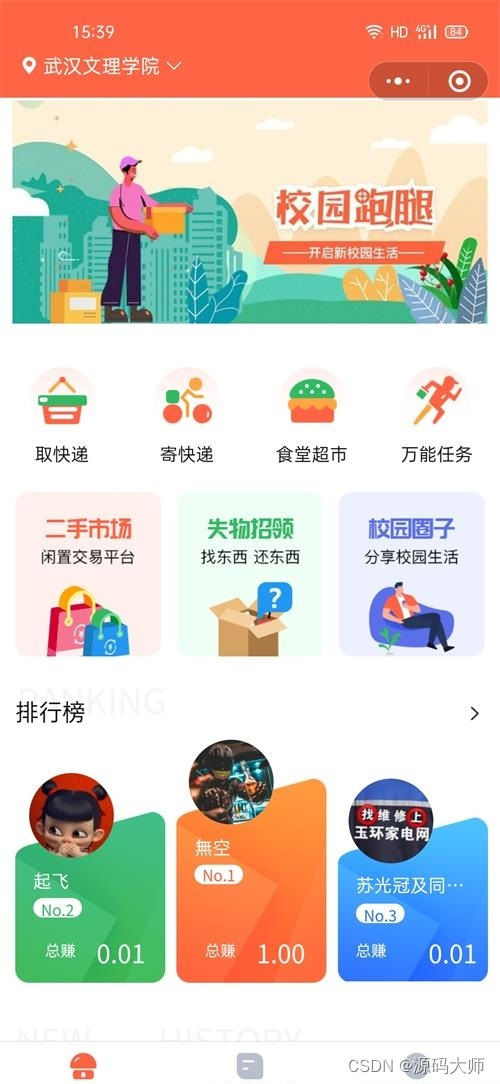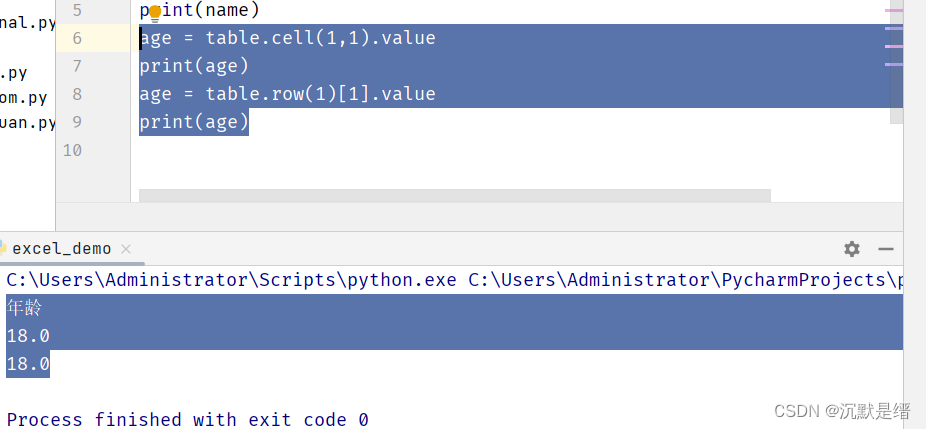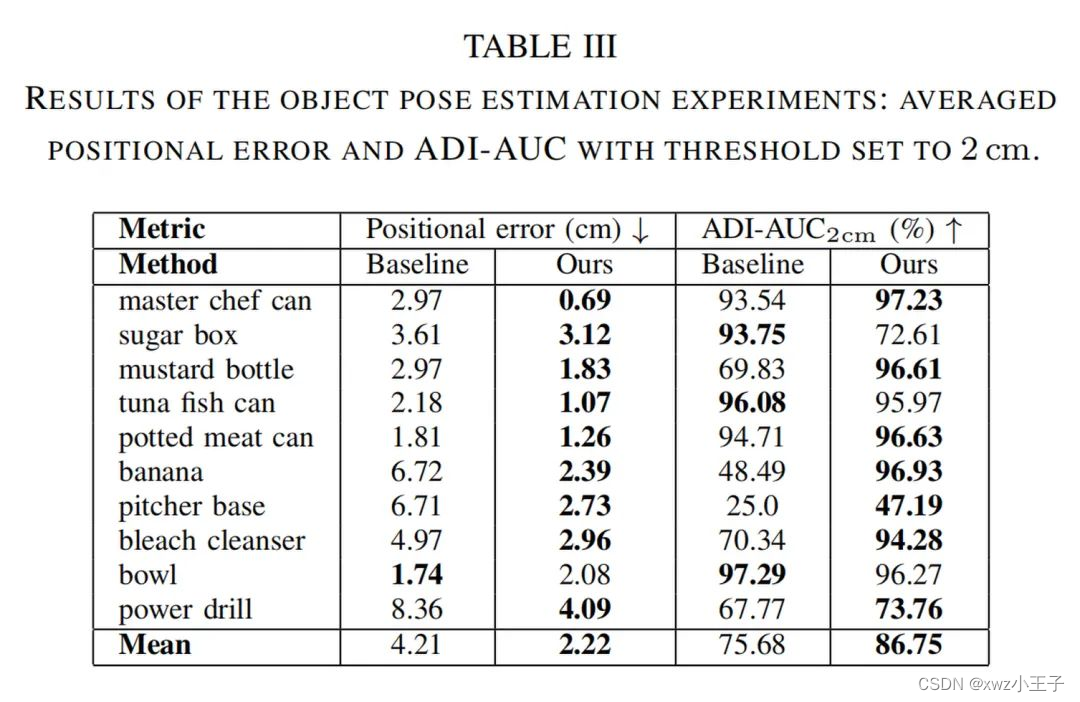Music统计功能需求
1.记录歌曲名称与次数(歌曲播放结束算一次),根据播放次数制作一个排行列表;(开始说要记录歌手,后面debug发现这个字段没有,暂时不记录)
2.记录播放歌曲的时长,时间累加;(经沟通,需要细分成每一个月的播放时长,另外再加一个首次使用的记录)
前几天需要实现这功能,昨天实现了,今天验证Ok,来谈谈我的做法,先上图(暂时版):

上面是一个简单的例子,具体UI后期需要给图再做调整,目前结构上面是一个通用的带返回键的titlebar,下面recyclerview加文本做数据展示,方便测试看数据,当然我都是用sqlite expert去查看数据:
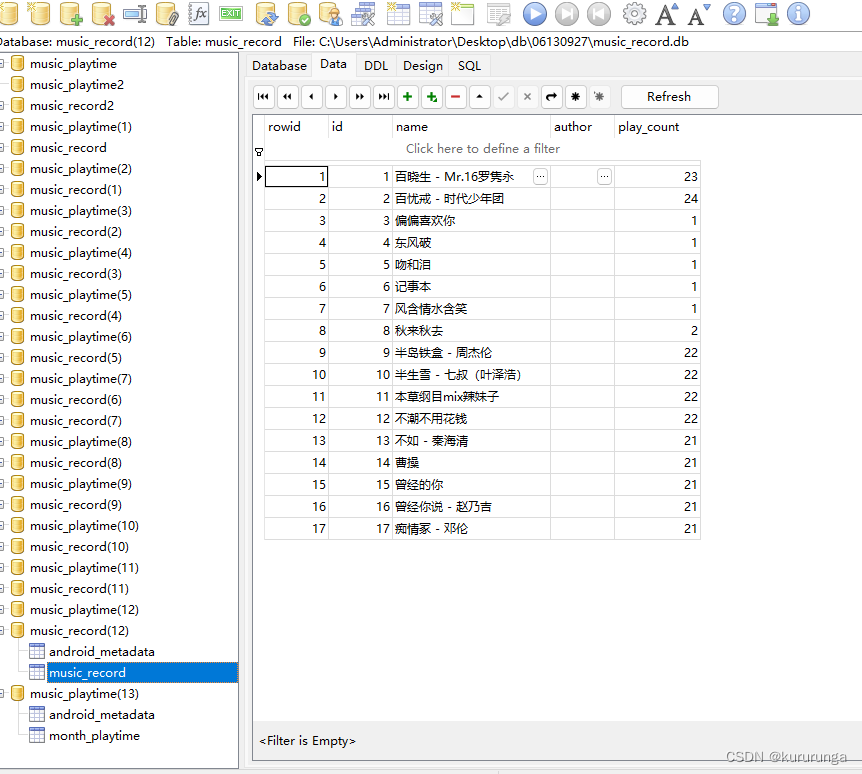
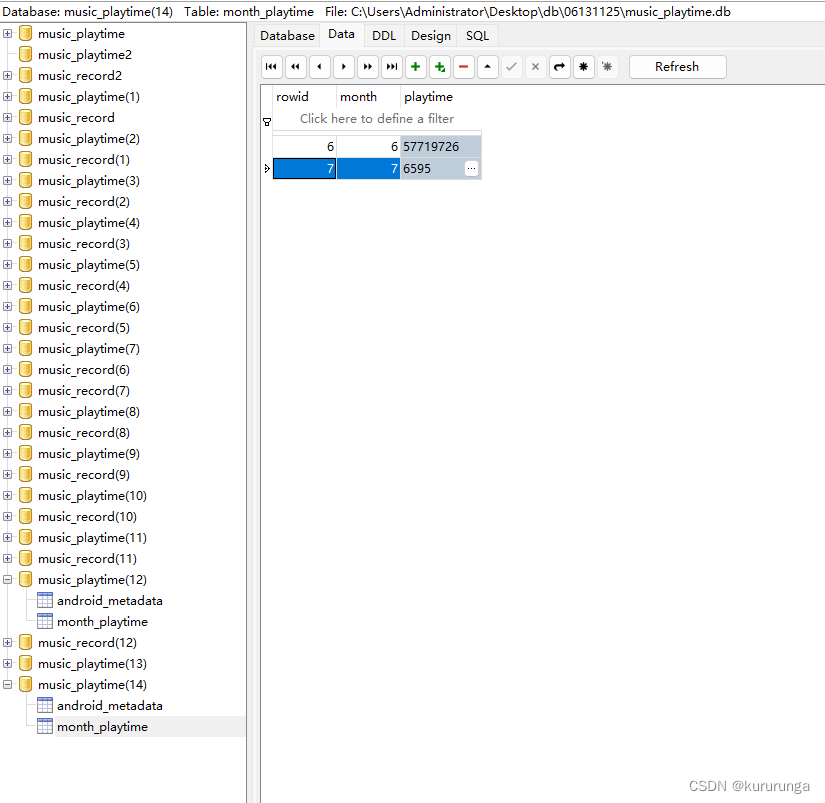

这里需要注意的是当我们从设备导出数据库的时候需要把.db和.db-shm和.db-wal都要导出,不然可能没有表和数据.
1.首先创建音乐播放数据库:
package com.hiby.music.musicinfofetchermaster.db;
import static com.hiby.music.musicinfofetchermaster.db.MusicRecordDao.COLUMN_PLAY_COUNT;
import static com.hiby.music.musicinfofetchermaster.db.MusicRecordDao.KEY_DB_TAB;
import android.content.ContentValues;
import android.content.Context;
import android.database.Cursor;
import android.database.DatabaseErrorHandler;
import android.database.sqlite.SQLiteDatabase;
import android.database.sqlite.SQLiteOpenHelper;
import androidx.annotation.NonNull;
import androidx.annotation.Nullable;
public class MusicRecordOpenHelper extends SQLiteOpenHelper {
private volatile static MusicRecordOpenHelper instances = null;
public static final String DB_NAME = "music_record.db";
public static final int DB_VERSION = 1;
public static MusicRecordOpenHelper getInstances(Context context) {
if (instances == null) {
synchronized (MusicRecordOpenHelper.class) {
if (instances == null) {
instances = new MusicRecordOpenHelper(context.getApplicationContext());
}
}
}
return instances;
}
public MusicRecordOpenHelper(Context context) {
super(context, DB_NAME, null, DB_VERSION);
}
@Override
public void onCreate(SQLiteDatabase db) {
db.execSQL(MusicRecordDao.CREATE_TABLE_SONGS);
}
@Override
public void onUpgrade(SQLiteDatabase db, int oldVersion, int newVersion) {
db.execSQL("DROP TABLE IF EXISTS " + KEY_DB_TAB);
onCreate(db);
}
public void insertOrUpdateSong(String name, String author) {
SQLiteDatabase db = instances.getWritableDatabase();
// 查询数据库中是否已经存在相同的歌曲
String selection = MusicRecordDao.COLUMN_NAME + " = ? AND " + MusicRecordDao.COLUMN_AUTHOR + " = ?";
String[] selectionArgs = {name, author};
Cursor cursor = db.query(
KEY_DB_TAB,
new String[]{COLUMN_PLAY_COUNT},
selection,
selectionArgs,
null,
null,
null
);
if (cursor.moveToFirst()) {
// 歌曲已存在,更新播放次数
int playCount = cursor.getInt(cursor.getColumnIndexOrThrow(COLUMN_PLAY_COUNT));
playCount++; // 增加播放次数
ContentValues values = new ContentValues();
values.put(COLUMN_PLAY_COUNT, playCount);
db.update(KEY_DB_TAB, values, selection, selectionArgs);
} else {
// 歌曲不存在,插入新记录
ContentValues values = new ContentValues();
values.put(MusicRecordDao.COLUMN_NAME, name);
values.put(MusicRecordDao.COLUMN_AUTHOR, author);
values.put(COLUMN_PLAY_COUNT, 1); // 初始播放次数为1,因为这是第一次插入
db.insert(KEY_DB_TAB, null, values);
}
cursor.close();
db.close();
}
// 插入新歌曲
public void insertSong(String name, String author) {
SQLiteDatabase db = instances.getWritableDatabase();
ContentValues values = new ContentValues();
values.put(MusicRecordDao.COLUMN_NAME, name);
values.put(MusicRecordDao.COLUMN_AUTHOR, author);
values.put(COLUMN_PLAY_COUNT, 0); // 初始播放次数为0
db.insert(KEY_DB_TAB, null, values);
db.close();
}
// 更新播放次数
public void incrementPlayCount(String name, String author) {
SQLiteDatabase db = instances.getWritableDatabase();
String selection = MusicRecordDao.COLUMN_NAME + " = ? AND " + MusicRecordDao.COLUMN_AUTHOR + " = ?";
String[] selectionArgs = {name, author};
Cursor cursor = db.query(MusicRecordDao.KEY_DB_TAB, new String[]{COLUMN_PLAY_COUNT},
selection, selectionArgs, null, null, null);
if (cursor != null && cursor.moveToFirst()) {
int playCount = cursor.getInt(cursor.getColumnIndexOrThrow(COLUMN_PLAY_COUNT));
playCount++;
ContentValues values = new ContentValues();
values.put(COLUMN_PLAY_COUNT, playCount);
db.update(MusicRecordDao.KEY_DB_TAB, values, selection, selectionArgs);
}
if (cursor != null) {
cursor.close();
}
db.close();
}
// 获取按播放次数排序的音乐记录
public Cursor getMusicSortedByPlayCount() {
SQLiteDatabase db = this.getReadableDatabase();
return db.query(KEY_DB_TAB, null, null, null, null, null, COLUMN_PLAY_COUNT + " DESC");
}
}
这里我直接把对数据进行插入的逻辑和查询写在里面了,下面是建表,放在Dao里:
public class MusicRecordDao {
public static final String KEY_DB_TAB = "music_record";
public static final String COLUMN_ID = "id";
public static final String COLUMN_NAME = "name";
public static final String COLUMN_AUTHOR = "author";
public static final String COLUMN_PLAY_COUNT = "play_count";
public static final String CREATE_TABLE_SONGS = "CREATE TABLE " + KEY_DB_TAB + " ("
+ COLUMN_ID + " INTEGER PRIMARY KEY AUTOINCREMENT, "
+ COLUMN_NAME + " TEXT NOT NULL, "
+ COLUMN_AUTHOR + " TEXT NOT NULL, "
+ COLUMN_PLAY_COUNT + " INTEGER DEFAULT 0)";
public static final String CLEAN_MUSIC_TAB = "DELETE FROM " + KEY_DB_TAB;
}
2.根据音乐播放生命周期的onAudioComplete中,进行数据库的保存:
@Override
public void onAudioComplete(IPlayer player, AudioInfo audio) {
saveMusicRecord(audio);
LogPlus.d("###onAudioComplete###");
}
...
private static void saveMusicRecord(AudioInfo audio) {
ThreadPoolExecutor.execute(() -> {
SmartPlayerApplication.getMusicRecordOpenHelper().getWritableDatabase();
String displayName = audio.displayName();
SmartPlayerApplication.getMusicRecordOpenHelper().insertOrUpdateSong(displayName, "");
});
}
上面就实现了音乐播放文件名和播放次数的更新插入
3.在具体页面进行查询:
private List getDataFromDb() {
List<MusicRankModel> list = new ArrayList<>();
MusicRecordOpenHelper musicRecordOpenHelper = SmartPlayerApplication.getMusicRecordOpenHelper();
musicRecordOpenHelper.getReadableDatabase();
Cursor cursor = musicRecordOpenHelper.getMusicSortedByPlayCount();
if (cursor != null && cursor.moveToFirst()) {
do {
@SuppressLint("Range") String name = cursor.getString(cursor.getColumnIndex(MusicRecordDao.COLUMN_NAME));
@SuppressLint("Range") int playCount = cursor.getInt(cursor.getColumnIndex(MusicRecordDao.COLUMN_PLAY_COUNT));
list.add(new MusicRankModel(name, playCount));
} while (cursor.moveToNext());
cursor.close();
}
if (list.size() > 100) {
list = list.subList(0, 100);
}
return list;
}
上面是经典的数据库写法,限制100个数量,
4.下面是UI层的展示
private void initData() {
recyclerView = findViewById(R.id.rv_rank_list);
recyclerView.setLayoutManager(new LinearLayoutManager(this));
//从数据库获取
musicList = getDataFromDb();
//musicList = generateMusicList();
adapter = new MusicRankAdapter(musicList);
recyclerView.setAdapter(adapter);
}
Adapter层做了TYPE_HEADER和TYPE_ITEM的处理:
public class MusicRankAdapter extends RecyclerView.Adapter<RecyclerView.ViewHolder> {
private List<MusicRankModel> musicList;
private static final int VIEW_TYPE_HEADER = 0;
private static final int VIEW_TYPE_ITEM = 1;
public static class MusicViewHolder extends RecyclerView.ViewHolder {
public TextView musicName;
public TextView playCount;
public MusicViewHolder(@NonNull View itemView) {
super(itemView);
musicName = itemView.findViewById(R.id.musicName);
playCount = itemView.findViewById(R.id.playCount);
}
}
public static class HeaderViewHolder extends RecyclerView.ViewHolder {
public HeaderViewHolder(@NonNull View itemView) {
super(itemView);
}
}
public MusicRankAdapter(List<MusicRankModel> musicList) {
this.musicList = musicList;
}
@NonNull
@Override
public RecyclerView.ViewHolder onCreateViewHolder(@NonNull ViewGroup parent, int viewType) {
if (viewType == VIEW_TYPE_HEADER) {
View headerView = LayoutInflater.from(parent.getContext())
.inflate(R.layout.item_music_header, parent, false);
return new HeaderViewHolder(headerView);
} else {
View itemView = LayoutInflater.from(parent.getContext())
.inflate(R.layout.item_music, parent, false);
return new MusicViewHolder(itemView);
}
}
@Override
public void onBindViewHolder(@NonNull RecyclerView.ViewHolder holder, int position) {
if (holder instanceof MusicViewHolder) {
MusicRankModel currentMusic = musicList.get(position - 1); // 减1因为第一个位置是头部视图
((MusicViewHolder) holder).musicName.setText(currentMusic.getName());
((MusicViewHolder) holder).playCount.setText(String.valueOf(currentMusic.getPlayCount()));
}
}
@Override
public int getItemViewType(int position) {
return position == 0 ? VIEW_TYPE_HEADER : VIEW_TYPE_ITEM;
}
@Override
public int getItemCount() {
return musicList.size() + 1; // 加1表示包括头部视图
}
}
具体item两个的layout:
item_music_header:
<?xml version="1.0" encoding="utf-8"?>
<LinearLayout xmlns:android="http://schemas.android.com/apk/res/android"
android:layout_width="match_parent"
android:layout_height="wrap_content"
android:orientation="horizontal"
android:padding="8dp">
<TextView
android:layout_width="0dp"
android:layout_height="wrap_content"
android:layout_weight="2"
android:text="歌曲名"
android:gravity="center"
android:textSize="16sp"
android:textStyle="bold" />
<TextView
android:layout_width="0dp"
android:layout_height="wrap_content"
android:layout_weight="1"
android:text="播放次数"
android:gravity="center"
android:textSize="16sp"
android:textStyle="bold" />
</LinearLayout>
item_music:
<?xml version="1.0" encoding="utf-8"?>
<LinearLayout xmlns:android="http://schemas.android.com/apk/res/android"
android:layout_width="match_parent"
android:layout_height="wrap_content"
android:orientation="horizontal"
android:padding="8dp">
<TextView
android:id="@+id/musicName"
android:layout_width="0dp"
android:layout_height="wrap_content"
android:layout_weight="2"
android:gravity="center"
android:text="Music Name"
android:textSize="16sp" />
<TextView
android:id="@+id/playCount"
android:layout_width="wrap_content"
android:layout_height="wrap_content"
android:text="Play Count"
android:layout_weight="1"
android:textSize="16sp"
android:gravity="center"
android:paddingStart="16dp"/>
</LinearLayout>
这样就实现了上面列表的效果。下面是时间戳记录和按月记录播放时长的思路放在下一篇去讲.









